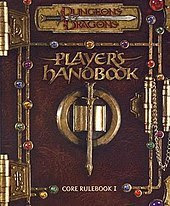 |
| Coat of arms created with Worldspinnner |
I would like to tell a story of a campaign I played in 2003. It is unlike many of my campaigns. It is an outlier, and a game that I wish I could recapture. Given some of the discourse on Twitter as of late, I thought it would be worthwhile sharing it.
This campaign was set on an interdimensional empire. A sprawling kingdom on one world discovered the means open up doorways to alternative Prime Material Planes, and so began an endless expansion from world to world filling in empty places with colonies. Trading with intelligent life on numerous realms, and often incorporating them into their political structure.
Culturally, it was designed to resemble Tudor England. At its heart, the empire was ruled by a myriad of entrenched political families with complex rivalries, debts, and alliances so Byzantine said it could be difficult to track. There were a total of 83 Noble houses spread across 11 planets. Wealthy trade guilds a growing merchant class had come into power to rival that of Nobles
The Player Characters were part of a minor house called Archer. One player character was the third daughter of the house, trained as a priestess of Hieroneous, (I was lazy and used the Greyhawk gods listed in the D&D3e core books.) The others were trusted retainers, including the daughter of a stable hand who is trained as an assassin, a lady in waiting who is also a talented alchemist and amateur transmuter, and a footman with levels in fighter.
All of the PCs had a secondary role as spies and secret agents of the house. Using the pretext of the daughter of the house traveling to tournaments, concerts, and theatrical performances across the empire to find a husband, the whole party engaged in sabotage, espionage, and intrigues to improve the position of House Archer, which was at the time suffering from faltering fortunes due to a drought.
The adventures were always set in various castles, estates, temples full of portals, or festival grounds. The player characters almost always had a goal to steal certain pieces of information, sabotage a performance, scandalize certain noblewomen, precipitate duels, make backroom bargains, and otherwise perform every underhanded trick they can think of within the strictures of their religion and courtly architecture to further their houses goals.
Now, when I wrote this campaign, I had expected player characters to often navigate darkened Castle hallways, secret tunnels, and active dungeons in order to do a great deal of their work. A few adventures involved visiting ancient alien ruins to pursue rival spies or protect the House's archaeological projects.
There was also a subplot about mind flayers subverting the noble houses on one planet.
What was fascinating, however, was that the players chose a different route for much of the play. Instead of sneaking and thieving, the players quickly came to prefer more intrigue-heavy methods. Claiming ransoms at the end of tournament battles was a popular one. Socializing with targets and getting them too drunk to perform the next day another. Mind reading and truth serum slipped into drinks, ventriloquism to create turmoil at the dinner, and even masterful social sniping became the preferred methodologies of the player characters.
There was practically no combat. In fact, there were only six combats in the style of traditional Dungeons & Dragons in the whole game, if you discount duels and sporting battles like jousting and archery tournaments. Most of those were against trained guard animals, mind flayers, and assassins.
In this campaign, I used what were pretty standard Dungeons & Dragons tools of the time for rewarding experience points. I still do not believe in using milestones most of the time, because it simply makes things too arbitrary. I awarded 1/26th of a level for attaining each objective in a mission. Completing the primary objective of any mission awarded experience equal to the value of the highest threat in the adventure. Experience was awarded for overcoming targets, so each encounter had a clear goal: guards had to be gotten past, guard animals had to be placated, surprised servants had to be prevented from raising alarms... almost always without leaving any evidence of their involvement.
By being transparent about how I was awarding XP, and almost always providing peaceful alternatives, battle became discarded in favor of diplomacy and stealth at almost every turn. And, as the players rose in ability, they tended to choose feats and special features that supported their non-combat role. The fighter became a master of disarming foes, terrifying bullies, knocking opponents unconscious, and grapples, to the point of having a fearsome reputation in illegal pit fighting and professional wrestling circuits alike.
For the low class servant girl, who could not access the courtrooms and fine dining tables, I created a secondary story of working as a double agent for another house. She gained experience for the encounters she could not actively participate in by fulfilling her own parallel missions in secret.
The campaign eventually hit epic levels, ending at level 22.
It concluded with House Archer sitting in a position to advise the Imperial Throne, and at the head of a merchant empire far more profitable than their failing farms. The final moments involved the Assassin exposing her treachery, leading to a dramatic duel between the cleric and the rogue, to applause of the table and congratulations for never having been detected, despite all the signs that other players could notice in retrospect.
One of the things I love about Dungeons & Dragons is that it is what you make it. Despite the emphasis of much of the OSR community on historical modules, and the community at large focused on the technical complexities of combat rules, a good game offers infinite possibilities A responsive DM can arrange the game to suit an incredible range of styles.

No comments:
Post a Comment